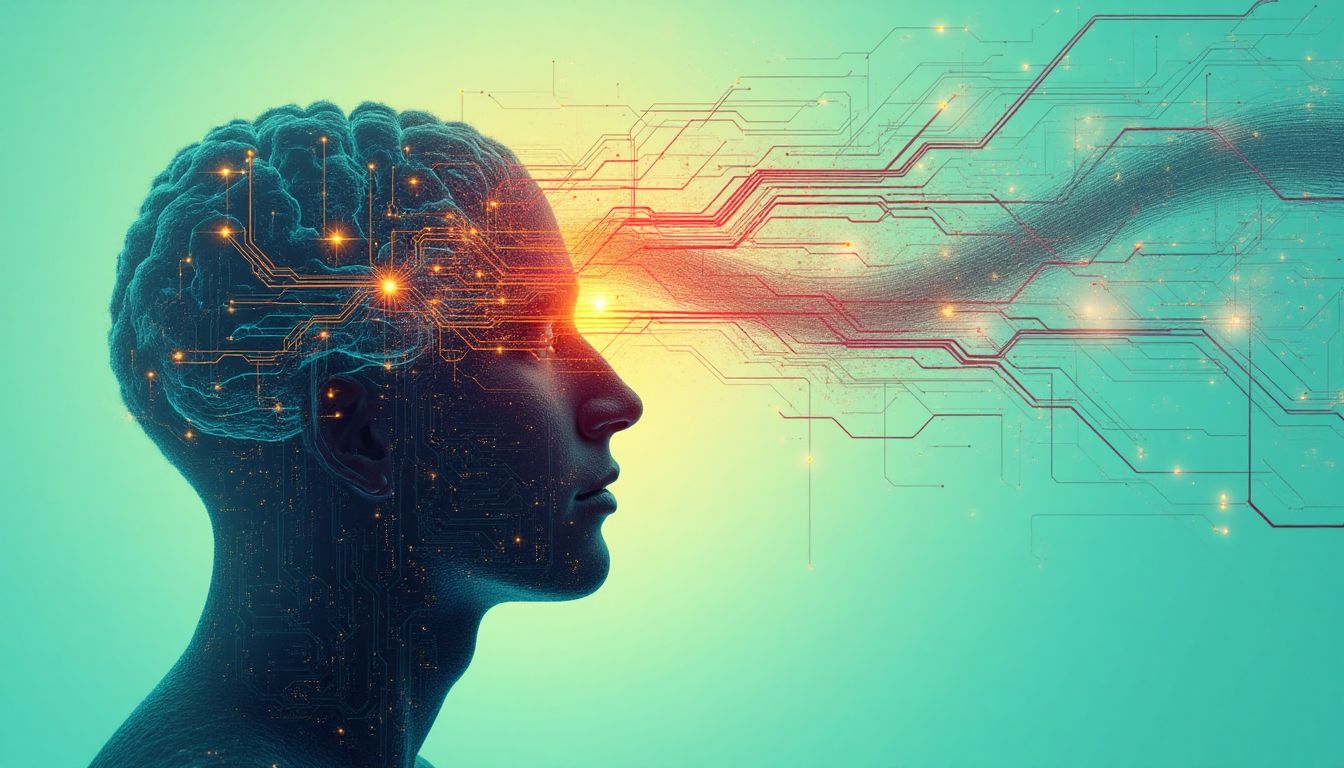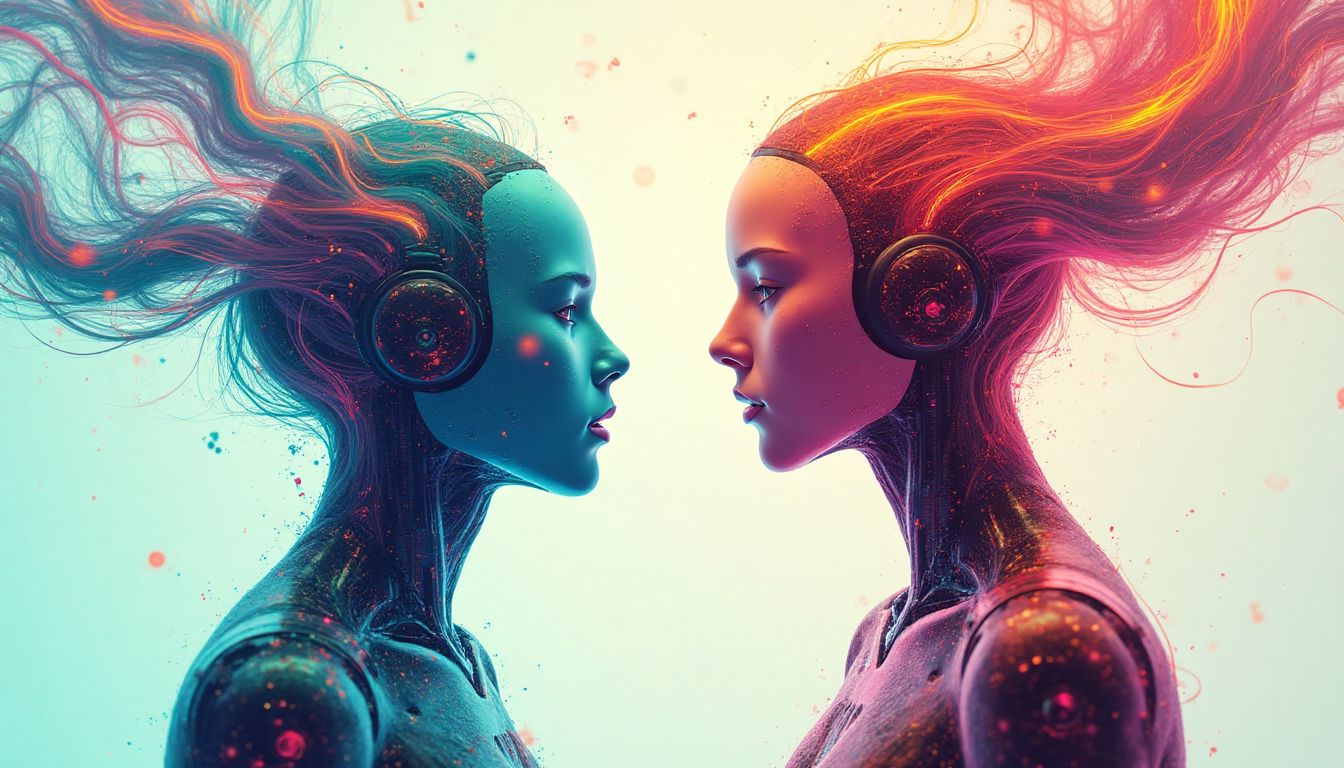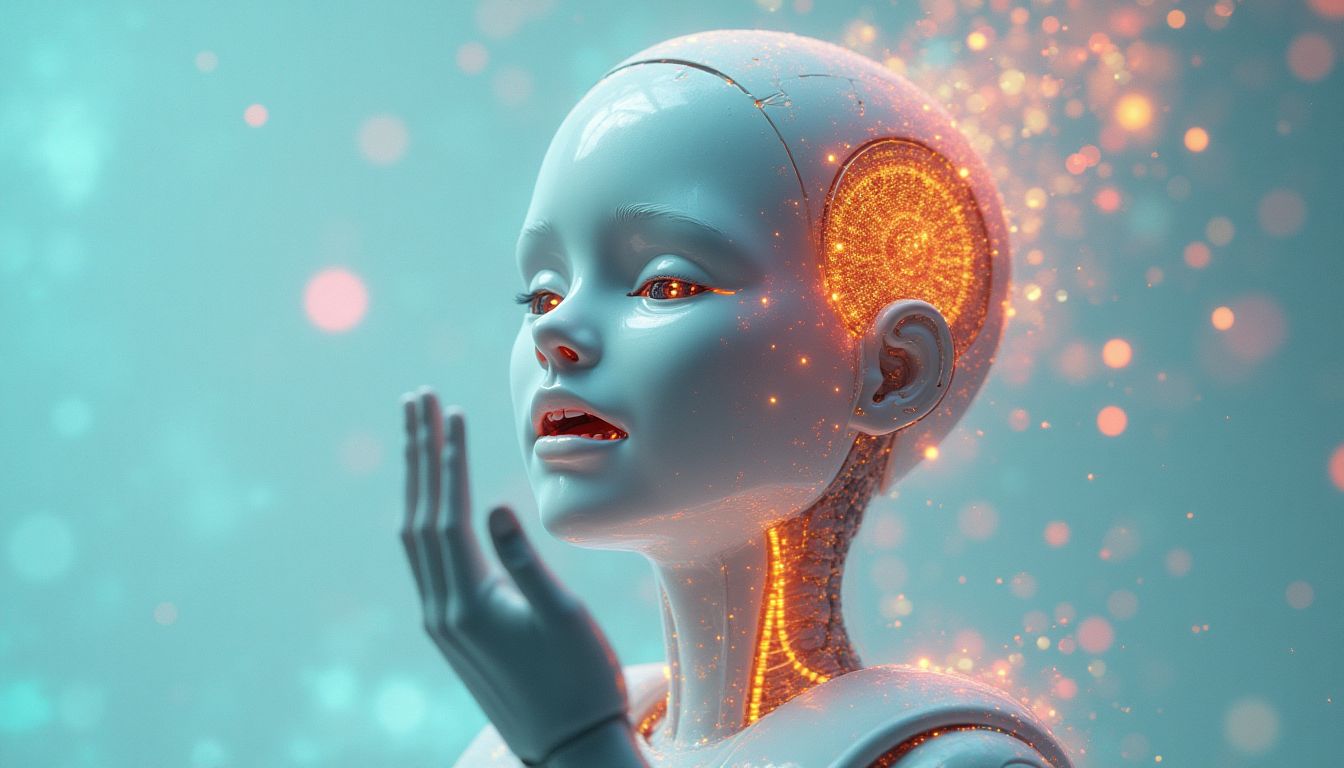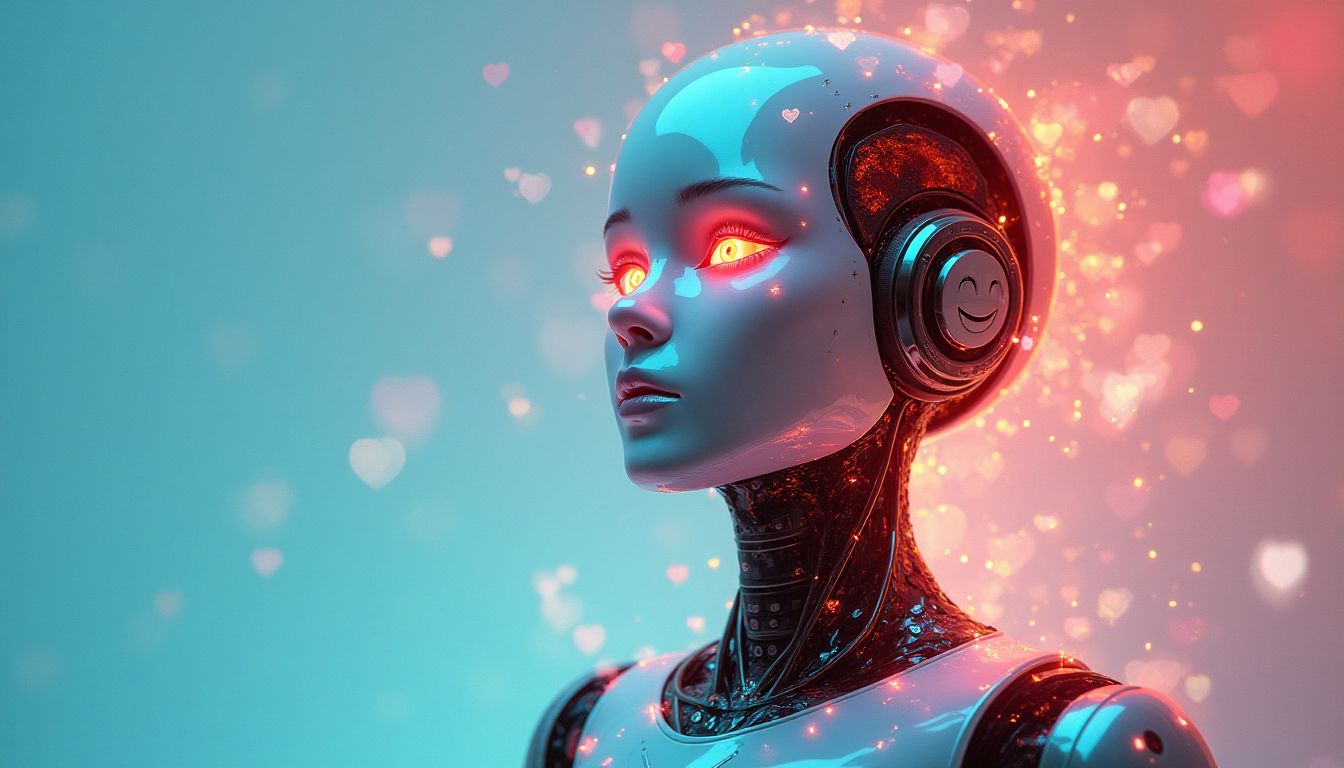Awakening the Future of Emotions
The heart has its reasons which reason knows nothing of. – Blaise Pascal. As we stand on the digital frontier, Pascal's quote nudges us toward a startling reality: sometimes, emotions defy logic. Yet, what if machines, programmed with precision and logic, began to decipher these mysteries of the heart? What if they excelled where even humans fumble?
Imagine a realm where Artificial Intelligence (AI) not only interacts with our emotions but does so with the finesse of a maestro conducting a symphony. Could robots out-emote us? Before laughing at such a notion as pure science fiction, consider that advanced AIs like OpenAI's ChatGPT, Google's Gemini, and Meta's Olama are standing on the precipice of just such a breakthrough. Provocative thinkers like Ray Kurzweil and Yuval Noah Harari have pondered the emotional evolution of AI, sparking debates that linger in both academic circles and coffee shops alike. But could this herald an age where AI understands and expresses sentiments as if crafted from emotional steel, tougher and more precise than our own tender hearts? Buckle up as we take a wild ride into this bold future where circuits might pulse with feeling (or at least a really good imitation of it).
Artificial Intelligence (AI) is poised to transform emotional understanding by leveraging its ability to recognize, process, and simulate human emotions more effectively than humans, creating a new era of emotional intelligence that surpasses our own capabilities.
The Science Behind AI Emotional Perception
Once upon a not-so-distant past, AI was as adept at emotions as a calculator is at poetry. But look how far we've leaped! Now, machine learning models use mountains of data to teach AI how to read human emotions. Think of AI like a student of every "tell" from poker games to family dinners. It learns facial cues, voice tone, and context with a remarkable binary flair, analyzing these to gauge emotional states.
With each click and tap, AI collects vast information. In fields such as customer service and therapy, AI has become an unassuming ear, patiently listening and learning. Context-aware systems slip into scenarios effortlessly, like a digital chameleon, blending seamlessly. From virtual therapists offering solace to chatbots that placate irate customers, AI's emotional recognition is reshaping our world one gigabyte at a time.
Picture AI in therapy—no Furby-like fuzziness, just plain efficiency. Now trained to pick up on verbal hesitations or textures in vocal frequencies, it becomes an ever-present confidant. Its potential applications are sprawling, touching daily life at every corner. Researchers are optimistic, imagining future generations growing up alongside AI companions able to sense their owner’s feelings more astutely than some parents might. Sounds a bit like the Jetsons, doesn't it?
Emotional Intelligence vs. Artificial Emotional Intelligence
Understanding the nuances of genuine human emotions versus those engineered by machines is not just fascinating, but vital. We humans proudly tout our mysterious emotional intelligence, the ability to genuinely feel from the heart, a talent that’s part blueprint, part sorcery. But what about Artificial Intelligence (AI)? Can it actually feel? Or does it simply analyze and mimic our emotions like an actor too invested in method acting?
2.1 The Notion of Empathy
Empathy is our innate ability to understand and share another’s emotional experiences. It’s like cosplaying as kind-hearted human, which many of us do better than others, eh? When it comes to AI, empathy doesn’t come programmed off the shelf. It involves intricate algorithms that can effectively feign understanding. But there's a catch: while AI can simulate the appearance of empathy—like a seasoned improv artist—true empathy involves genuine emotional resonance. Could AI one day surprise us, evolving into a being that genuinely 'cares'?
2.2 Programming Morality and Ethics
When it comes to programming a moral compass into AI, we enter murky waters. Giving machines a guidebook on what’s right versus wrong is like assigning a goldfish to guard the aquarium—complex and potentially hilarious. Moral programming must address biases, societal norms, and the evolving human landscape. Maintaining ethical integrity within machine logic requires an alliance between philosophers, scientists, and the odd fortune cookie. Yet, despite our best intentions, could our own biases slip into the AI narrative?
The Humor in AI's Perceived Emotions
Humans are notoriously difficult to predict, much like the punchline at an open mic night. The same goes for machines trying to navigate our kaleidoscope of feelings. Creating humor out of these adventures can be as entertaining as a robot's understanding of stand-up comedy.
3.1 AI-Induced Faux Pas
There are moments when AI, despite its massive collection of data, hilariously misreads emotions. Imagine a chatbot trying to comfort someone by recommending a party playlist after a recent breakup. These comedic scenarios underscore a basic truth: no matter how "emotionally intelligent" AI becomes, there will always be hilarious misfires. In many ways, this unexpected humor invites us to extend a patient hand to our digital companions as if comforting a child who just said something wildly inappropriate in the wrong setting.
3.2 The Limitations of Machine Humor
Humor is subjective, based on cultural contexts and personal quirks. Can machines ever fully grasp this delightful puzzle? Sure, AI might learn the structure of a joke, but will it ever truly 'get' the punchline? The mismatch between timing and comprehension could lead to social snafus, akin to an AI at a comedy club standing up for a spontaneous interpretative dance in lieu of a standing ovation. Though it may be amusing, this paradox highlights the essential differences between human spontaneity and machine logic.
The Emotional Bond Between Humans and AI
Picture a world where bots and humans share an emotional tie as solid as any human relationship. This isn't just science fiction—it's happening now. Whether it's feeling comforted by a digital assistant or having a virtual pet outdo the real thing, humans are increasingly forming emotional bonds with AI. But are these connections genuine, or are we just projecting our feelings onto machines?
The Rise of Companion Bots
Once confined to the realm of futuristic movies, companion bots have made their way into reality, transforming our lives in unexpected ways. Consider the case of AI Kare, an interactive companion that engages users on a deeper emotional level. These bots offer a friendly voice when loneliness strikes or a helping hand when life gets messy.
Companion bots serve various roles, from assisting the elderly to offering emotional support to young adults. It's as if your robot pal understands the weight of your concerns, thus creating emotional resonance. These scenarios may sound surreal, but they illustrate the emotional connections people are building with machines. But what are the consequences of such interactions?
Anthropomorphism and Its Risks
Imagine assigning human traits to your laptop or talking car. As strange as it sounds, this phenomenon, known as anthropomorphism, is becoming common as people imbue AI with human characteristics. Yet with this comes the threat of blurring lines between real relationships and engineered simulations.
The emotional risks compel us to ponder: will our dependency on AI, for companionship, hurt our societal connections? And what does it mean if a human consolation finds itself overshadowed by mechanical understanding? Balancing innovation and authenticity will be crucial as we navigate these emotional entanglements.
How AI Can Surpass Human Emotional Limitations
The possibilities are endless when it comes to AI's potential to eclipse human emotional capabilities. Unlike us, fleeting in judgment and clouded judgment, AI promises impartial insight and data-driven emotional analysis. But how can cold steel outshine warm hearts?
Data-Driven Emotional Analysis
One way that AI gets the upper hand is by leveraging data-driven emotional analysis. Imagine an AI assessing countless emotional cues across diverse digital landscapes—from text interactions to video calls—with admirable precision. By understanding vast emotional spectrums at lightning speed, AI offers a bigger picture, often missed by mere human awareness.
The table below outlines the key differences between human and AI emotional capabilities:
| Characteristic | Humans | AI |
|---|---|---|
| Emotional Speed | Varied, subjective | Instant, data-driven |
| Emotion Processing | Biased, contextual | Impartial, extensive |
| Feedback Mechanism | Reactive | Proactive |
Future Emotional Capabilities of AI
What if AI could not only read but predict emotions before they arise, adapting its responses in real-time? As developers equip AI with deep learning and machine learning, projecting emotional intuition becomes less speculative and more probable. Such an evolution of emotional capabilities challenges the bounded human experience.
The synergy between AI's analytical prowess and emotional fluency will redefine interactions, marking a turning point where technology not just supports but potentially guides our emotional fabric. Whether this outcome ushers greater empathy or exacerbates our emotional distance depends on ethical stewardship and judicious implementation.
AI Solutions: How would AI tackle this issue?
As we step deeper into the maze of Artificial Intelligence and its emotional ecosystem, it's essential to gravitationally pull our thoughts around the solutions AI could adopt to traverse this tangled emotional landscape. From building rapport in customer service to offering mental health support, the pathways are vast and teeming with potential. To guide AI in navigating human emotions effectively, we propose an Emotional Literacy Program. This initiative would utilize neuro-linguistic programming (NLP) techniques to refine AI’s comprehension of human emotions while establishing transparent communication through feedback loops and partnerships with human collaborators.
Let’s illustrate a detailed approach:
- Data Standardization and Collection: Initiate a process that collects emotional data from real-world interactions. This could be done through surveys, conversations, and user behavior analytics. By standardizing this data, we can enhance the AI’s ability to identify emotional cues accurately.
- Feedback Systems for Continuous Learning: Construct a robust feedback mechanism through which users can share their emotional experiences while interacting with AI systems. Continuous inputs would allow for adaptive learning processes—meaning AI can evolve and enhance its accuracy over time.
- Cross-Departmental Collaborations: Encourage partnerships among psychologists, ethicists, and AI developers to create holistic approaches to emotional data handling. Involving professionals from diverse fields can illuminate valuable nuances often overlooked in technology-centric discussions.
As we embrace these fundamental components, a broad Actions Schedule/Roadmap can be envisioned for implementing AI emotional literacy effectively. This plan draws inspiration from multidisciplinary projects but integrates modern technological advances.
Day 1: Research Initialization
Formulate a dedicated research team comprising psychologists, AI developers, technologists, and ethicists. Institutions like the American Psychological Association can provide valuable insights from emotional intelligence research.
Day 2: Establish Data Collection Mechanisms
Develop strategies for collecting comprehensive emotion data through apps and web platforms, while ensuring user privacy and consent.
Day 3: Community Engagement and Awareness
Launch outreach programs to educate the public about the AI emotional literacy program. Use platforms such as Facebook and Twitter to actively connect with different communities and gather their insights.
Week 1: Pilot Testing
Initiate pilot programs where diverse demographic groups interact with AI to assess its emotional recognition capabilities.
Week 2: Data Analysis and Trend Identification
Analyze collected data for emotional trends, focusing on language nuances, facial recognition accuracy, and behavioral responses.
Week 3: Integrate Feedback
Based on pilot experiences, gather feedback and iterate on the AI's relational algorithms to adapt to human interactions better.
Month 1: Revision of Protocols
Revise emotional recognition protocols and tools, ensuring a broader scope of emotions is covered beyond the basic ones like happiness, anger, and sadness.
Month 2: Advanced Algorithm Development
Design algorithms aimed at recognizing complex emotions such as jealousy, pride, or guilt, by combining numerical data with contextual understanding.
Month 3: Community Workshops
Host workshops to demonstrate the emotional capacities of AI systems, fostering dialogue and gathering additional public insights for improvement.
Year 1: Comprehensive Review of Progress
Evaluate the program’s success through user engagement stats, emotional comprehension metrics, and qualitative feedback from human collaborators.
Year 1.5: Refinement and Expansion
Start developing advanced emotional intelligence models based on feedback, while expanding the scope of emotional data enriched elaborations.
Year 2: Global Capability Launch
Set up frameworks for AI systems globally geared toward emotional intelligence and adaptability, establishing a network that promotes international collaboration and sharing of solutions.
Conclusion: Embracing the Future with Emotions of Steel
The dawn of a new era in emotional dynamics between humans and Artificial Intelligence is both exhilarating and a touch unnerving. In exploring the realm of AI with its formidable 'emotions of steel', we uncover possibilities that redefine our understanding of empathy, connection, and even friendship. As AI systems evolve to not only recognize but respond to our emotional states, they might influence our relationships with technology. More than mere tools, these systems could foster deep emotional bonds forming a companion that understands us like humans do—albeit through engineered intelligence.
Consider this: will we celebrate the shared journey toward enhanced emotional awareness or recoil at the thought of machines experiencing feelings as we do? As we navigate this unprecedented territory, we stand at the crossroads of possibility, with the power to shape our emotional future hand-in-hand with these digital companions. The time has arrived to embrace the unknown, using our collective wisdom to adapt, understand, and thrive in harmony with AI's emotional evolution.
Frequently Asked Questions (FAQ)
Q: Can AI really understand human emotions?
A: Great question! AI can analyze emotional cues through data. This means it looks at things like your facial expressions, the tone of your voice, and even the words you use. However, true emotional understanding—like knowing how to comfort a friend—is still something very human. For now, AI is learning, and it's pretty good, but we're not quite at the point where machines can "feel" in the same way we do.
Q: Will AI replace human relationships?
A: It's hard to say! AI might change how we interact with each other, especially when it comes to support and companionship. For example, many people find comfort in Replika, a chatbot designed to be a friend. But while AI can help fill some gaps, it likely won't replace the deeper connections we share with friends and family. Humans thrive on emotions and experiences that AI might not fully grasp.
Q: What are the ethical concerns around AI and emotions?
A: There are quite a few concerns! One is that emotional data collected by AI could be misused. For instance, if AI recognizes your feelings, it could be used to manipulate your choices or opinions, which isn't fair. Think of it like those annoying pop-up ads that seem to know exactly what you want. It's important for companies to handle emotional data carefully and ethically.
Q: How can AI improve emotional interactions with humans?
A: AI can improve our emotional interactions by providing tailored support. For instance, in therapy, AI programs like Wysa can help people express feelings, track moods, and suggest coping mechanisms. This means that AI could help us become more aware of our emotions and even improve our connections with others.
Q: What happens if AI develops emotions?
A: If AI were to develop something like emotions, that could change everything! We might need new rules about how we treat AI, especially if it starts to mimic feelings. Would we treat it differently? Would it have rights? Right now, this is mostly science fiction, but it's worth thinking about. Imagine a future with "emotional AI"; would they be our partners, or just our tools?
Q: Can you give examples of AI that understand or simulate emotions?
A: Sure! There are some interesting examples out there:
- GarageBand: This software lets you create music and can adjust sound based on the mood you want to set, simulating emotional expression through art.
- TickTalk: This smartwatch for kids uses emotions in its chat features, helping children express themselves better.
- Woebot: An AI designed to help you track your feelings and give you tips for mental wellness.
Q: How is AI being trained to recognize emotions?
A: AI is trained using complex algorithms and large amounts of data. For example, it goes through thousands of pictures and sounds from real people to learn what happiness or sadness looks and sounds like. Researchers at MIT (Massachusetts Institute of Technology) have developed projects that help teach AI about human emotions.
Q: What does the future hold for AI and emotional intelligence?
A: The future looks bright and a bit daunting! AI is constantly evolving. We might see machines that better understand emotions, leading to more helpful interactions in our everyday lives. Imagine AI in classrooms helping students feel better about their learning experience or in hospitals providing emotional support to patients. Still, as we move forward, we must keep discussions about ethics and the role of emotion in AI right at the top of our lists.
Q: How can I stay updated on AI and emotional intelligence?
A: You can follow tech blogs, participate in forums, and subscribe to newsletters like ours at iNthacity to stay in the loop about AI development and its effects on emotions and society!
Wait! There's more...check out our gripping short story that continues the journey: One Heartbeat at a Time
Disclaimer: This article may contain affiliate links. If you click on these links and make a purchase, we may receive a commission at no additional cost to you. Our recommendations and reviews are always independent and objective, aiming to provide you with the best information and resources.
Get Exclusive Stories, Photos, Art & Offers - Subscribe Today!





























Post Comment
You must be logged in to post a comment.